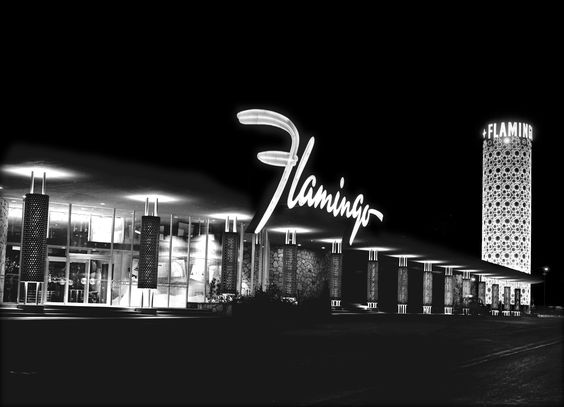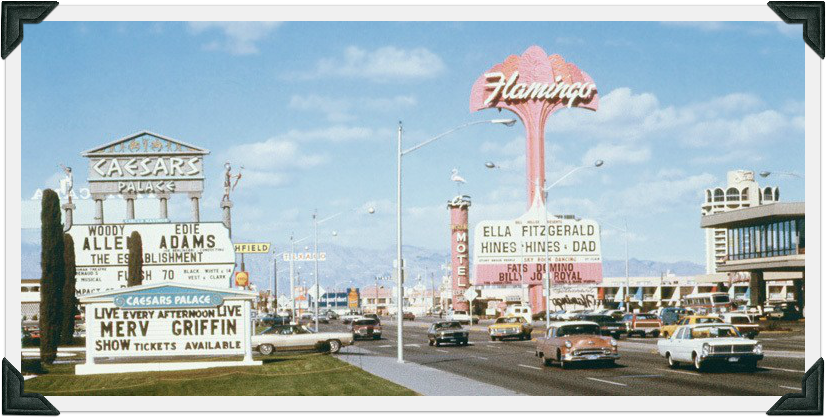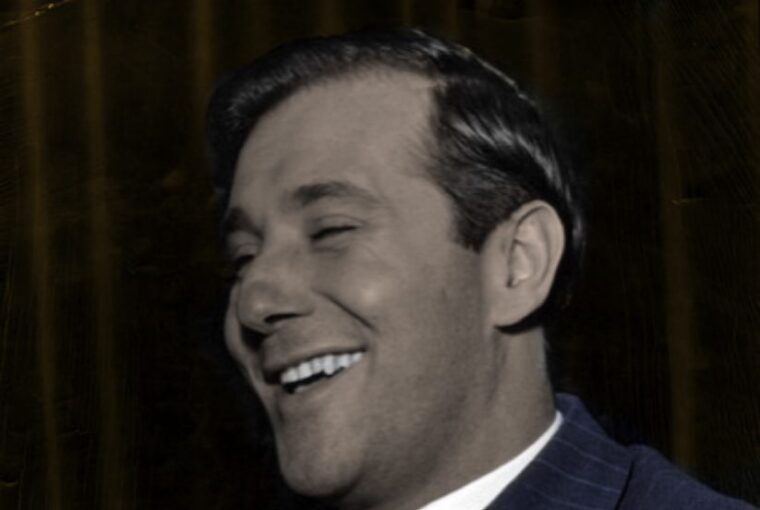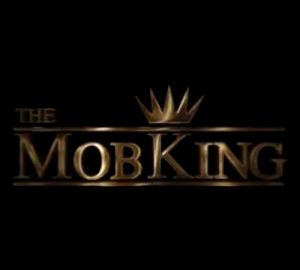Las Vegas is an oasis in the Mojave Desert, but tourists don’t go there for nature. On the contrary, the world of casinos and nightclubs, illuminated by thousands of lights, attracts them. Some say Sin City would still be a dusty road if not for Benjamin Siegel. The notorious Bugsy dreamt of building the America-own Monte Carlo and invested a fortune to refurbish a remote town’s several buzzing empty casinos. Within a decade, he created an empire.
Fascinated by glamor, a prominent character in the 1940s mob world quickly became one of the USA’s wealthiest businessmen. Considering the stories of the best paying modern online casinos, you can see the extent of his actions. For example, this is the story of a New York boy who created a Nevada gambling empire. From his early years of alleged prohibited activity to owning Las Vegas casino resorts – Bugsy’s life is here for you to read.
Early Years and Becoming “Bugsy” Siegel
Benjamin Siegel was born on February 28, 1906, in Brooklyn, New York. His Russian-Jewish immigrant family was poor and lived in Williamsburg, a crime-ridden neighborhood. Siegel joined a local gang as a young man, stealing and committing other petty crimes. Later, he began extorting “protection” money from peddlers in the New York area.
In 1918, Siegel became the friend of Meyer Lansky, another Jewish teenager who was a prominent Mafia member. They formed the Bug and Meyer Mob and spread their crimes to alleviate contract killing, gambling, and hoarding.
Because of his awkward nature, his friends said he was crazy as a bedbug. That’s why they started to call him Bugs or Bugzy. He didn’t appreciate that nickname and kept saying, “Friends call me Ben, strangers call me Mr. Siegel, and guys who don’t like me call me Bugsy, but not to my face.”
In the late 1930s, Siegel moved to California, setting up a gambling racket and recruiting the Jewish mobster Mickey Cohen as second-in-command. He started the drug trade between Mexico and the US and rose into a significant figure in Hollywood circles. Siegel had great connections with famous movie stars such as Clark Gable, Frank Sinatra, and Jean Harlow.
Criminal Activity
Siegel was arrested for various reasons, from narcotics and weapons possession to murder and rape. Still, he was only found guilty twice, and that was for gambling. Both times, he paid the fine and went free.
Bugs and Meyer organized gambling games on the street but, at the same time, planned more severe and profitable ventures. Lucky Luciano opened the door to “serious business” for them. Together, they started investing in New York bookmakers and bribing police officers and politicians. Also, the Prohibition Act of 1920 opened up previously unimagined possibilities for the American mafia.
Arnold Rothstein, the then-powerful Murder, Inc.’s protege, sought reliable individuals for the lucrative alcohol business. Bugs and Meyer had developed a business of renting transport trucks, which was a suitable font for smuggling shops. Yet, around 1935, the circle of New York bosses was getting tighter, and Bugsy Siegel assumed that his future lay in California.
Building Glamour and Chic Gambling in the Desert

Close connections with Hollywood led Bugsy to another lucrative “business” – money extortion from movie moguls. With millions in cash, he soon turned into an emerging yet lucrative industry. Casinos were less risky than drug dealing and smuggling, and Nevada was one of the few states that legalized its now-famous activity.
Las Vegas legalized off-track gambling, and betting was the main reason for Siegel to move to Nevada in 1945. Already in the Trans America Wire racing publication business, Bugsy expands his horizons with the El Cortez Casino. The investment of $600,000 brought a profit of $160,000 when sold shortly after. This was a trigger for starting the Flamingo Hotel and Casino project.
Billy Wilkerson, owner of Las Vegas Strip trendy nightclubs and The Hollywood Reporter magazine, had the same idea. Siegel “persuaded” him to withdraw and took over the building. The initial $1 million investment wasn’t enough, so the New York crew had to step up. Bugsy borrowed from shady partners – Meyer Lansky, Frank Costello, and Lucky Luciano to finish the project. And why “Flamingo Casino“? Some say Siegel’s then-girlfriend Virginia Hill had the same nickname, as her long legs and red hair reminded the mobster of a flamingo bird.
Bugsy’s idea was to bring a European-style hotel into the Sunset Strip. The plan was to refresh the desert atmosphere with a spa, luxury chambers, and other facilities – a nightclub, a health club, a golf course, and even an upscale restaurant. Besides his funds, Bugsy relied on the highest payout casino games as an additional income source. Yet, this grandiose idea needed more funds.
The day after Christmas 1946 was the casino’s grand opening. Still, the Flamingo Hotel had to wait for some time. Bugsy hired a top-notch crew to entertain his guests. Jimmy Durante, then-famous comedian and singer, was the host. Xavier Cugat played with a Spanish/Cuban band.
Despite the hype, the Flamingo Casino’s grand opening was a massive disaster for Bugsy. Due to bad weather, many movie stars failed to arrive. Moreover, there was no hotel, so gamblers took their winnings and left to play elsewhere. Only in the first business week, the casino loses $300,000 – far from top paying casinos standards. The money wasn’t flowing, and co-investors Lansky and Costello began to lose faith in Siegel’s promises that they would quickly turn a hefty profit. The Flamingo Casino worked only for two weeks.
Casino Payouts – Flamingo’s Success Source
In the 1940s, best casino payouts were relatively straightforward. Slot machines, which were becoming popular in places across the country, offered fixed payouts. These were based on the combinations of symbols that appeared on the reels, and winning combinations had set values. The jackpot was a consistent amount, and everyone knew what to expect if they hit the big prize.
Fast forward to today, and the landscape of casino gaming has evolved exponentially. One of the most significant advancements in modern casino payouts is the introduction of progressive jackpots. Unlike the fixed jackpots of the past, the best paying casino sites reviewed by leafletcasino.com experts offer progressive jackpots that grow every time a bet is placed on the machine, and they don’t stop growing until someone wins. This has led to jackpots that can reach millions of dollars, creating a level of excitement and anticipation that was unheard of in Bugsy Siegel’s time. Hence, the first venture failed quite soon.
Magnificent Flamingo
The short-lived place reopened on March 1, 1947. This time, it was “The Magnificent Flamingo”. The first reports on profits came by May, even though figures weren’t enough for Siegel to avoid problems. That was the first time Flamingo brought some profit to its owners and became a lucrative gambling spot for visitors. However, the money flow didn’t bring good luck to Benjamin Siegel.
Convinced that Bugsy was not giving them a “square share”, certain organized crime partners decided it was time to end Bugsy’s reign. The mob boss died on June 20, 1947, after being shot in the eye while reading newspapers in Beverly Hills. The legend remains to this day, just like the unsolved crime.
After Siegel’s Demise

According to his biographer Robert Lacey, Bugsy Siegel did not invent the luxury LV casino resorts. “Meyer Lansky: The Thinking Man’s Gangster” book also claims “he did not find the Las Vegas Strip. He did not buy the land or first conceive the project that became the Flamingo. But by his death, he made them all recognized”.
Bugsy’s myth remained an excellent popular culture item. In 1960, the Flamingo Hotel was the scenery for the first version of Ocean’s 11 and its 2001 version as a flashback sequence. Four years later, it hosted the film Viva Las Vegas. In 1991, Warren Beatty starred as Bugsy Siegel in “Bugsy.” Revolving around the Flamingo Casino, the film had many details altered, achieving a higher dramatic effect.
But what happened to all the slot machines and table games in the Flamingo? Within a minute after the news of Siegel’s death spread, Syndicate leaders took over the casino’s management. Al Capone’s successors spurred the resort’s development and cemented mobsters’ investment in Sin City. Sadly, the short-lived Siegel was among the many that didn’t mean much in a city that devoured people. Still, his story exemplifies how a best paying casino should rely on legality to be prosperous and that crime never gives the best payouts.
- Are Your Assets in Danger if Your Spouse Gets Into a Car Accident During Your Divorce? - July 23, 2024
- Breaking Down The Costs: How Much Does Crime Scene Cleanup Cost? - July 10, 2024
- Can Weed Make You Angry? - July 3, 2024









